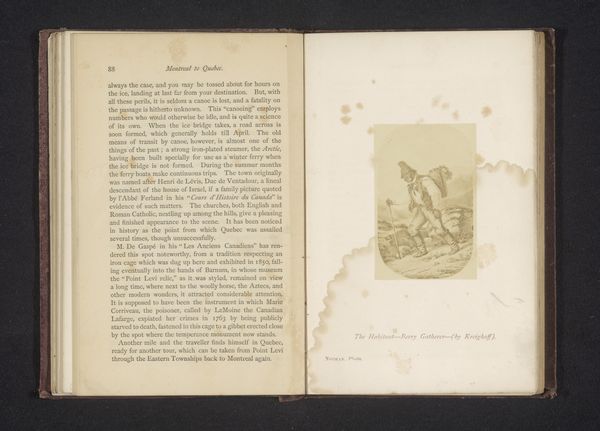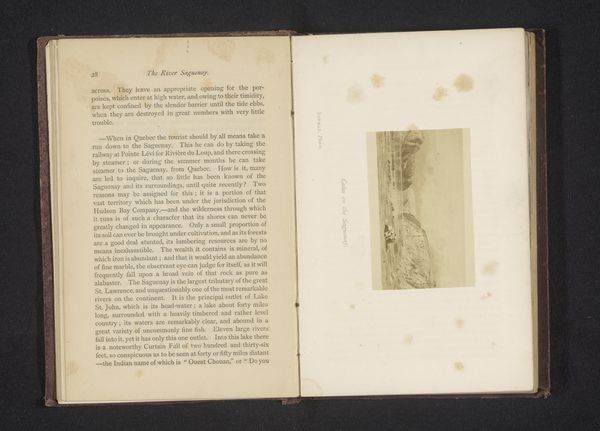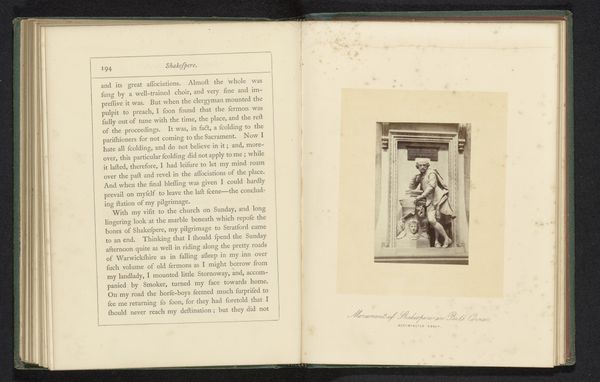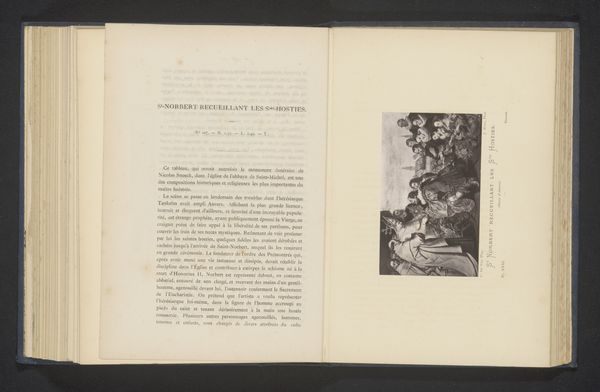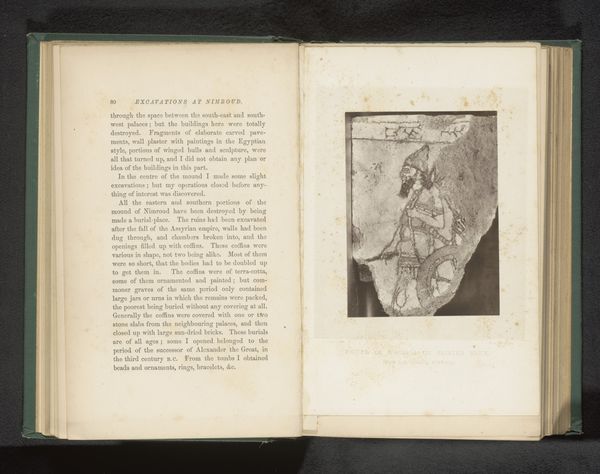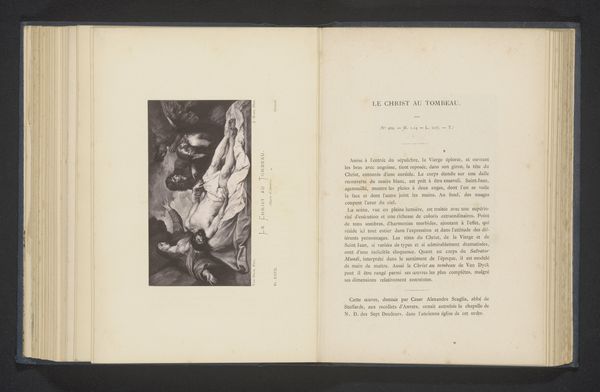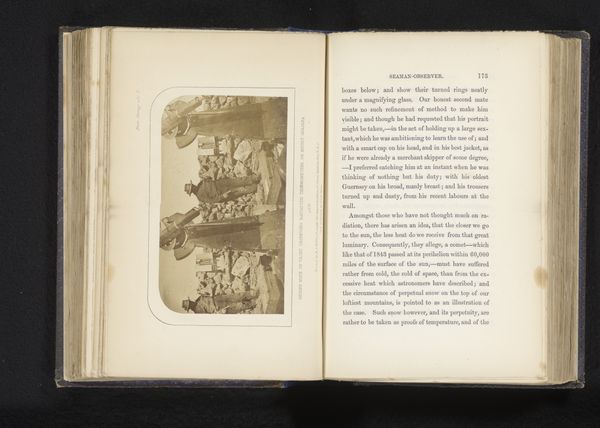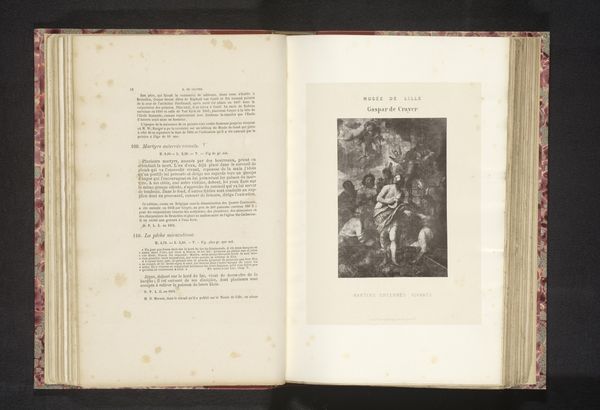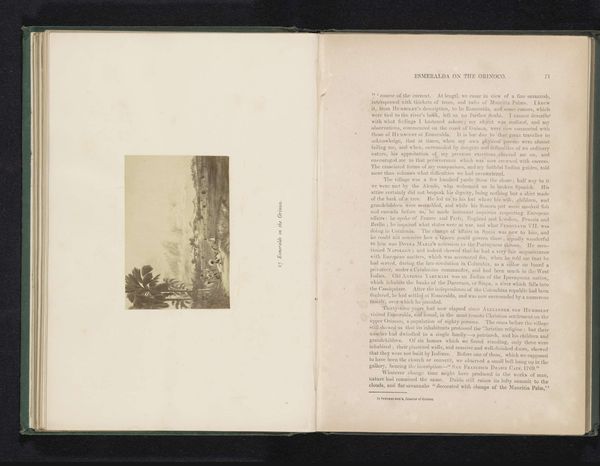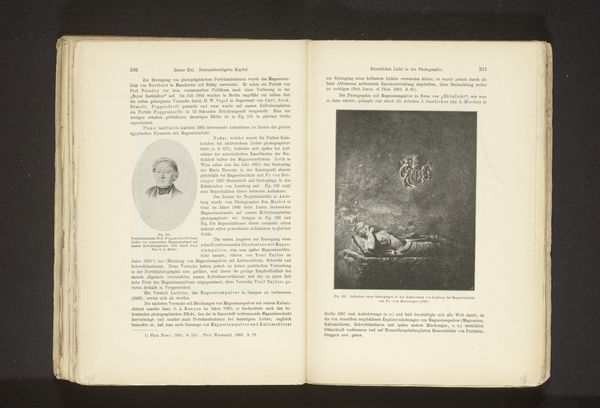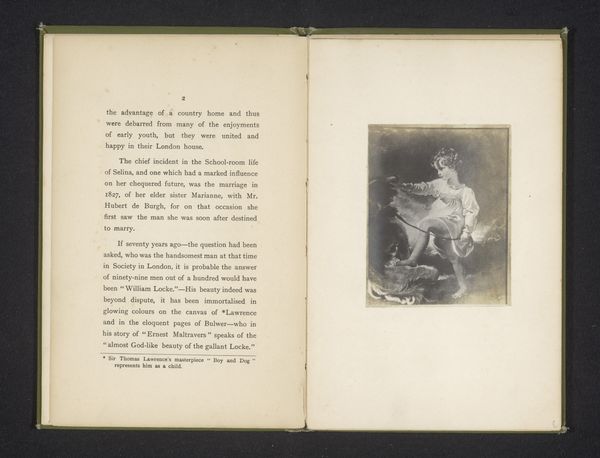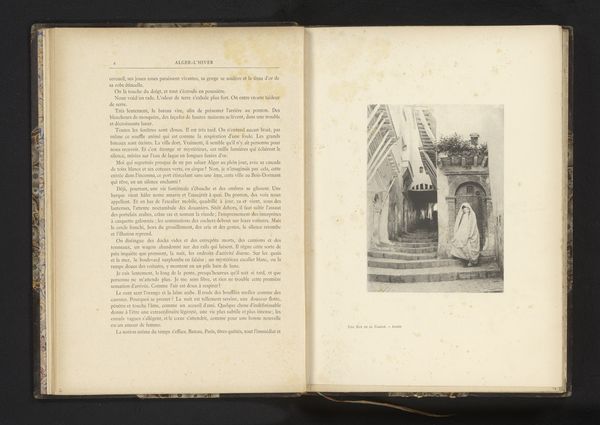
albumen-print, print, photography
#
albumen-print
#
portrait
#
aged paper
#
homemade paper
# print
#
photography
#
journal
#
fading type
#
thick font
#
handwritten font
#
classical type
#
historical font
#
columned text
#
small font
Dimensions: height 82 mm, width 57 mm
Copyright: Rijks Museum: Open Domain
Editor: This is a photograph entitled "The Squaw-basket maker" by William Notman, dating to before 1866. It looks like it’s pasted into a book. The print has faded a lot with age. The subject looks weary, yet resolute. What strikes you when you see this piece? Curator: My immediate reaction is to consider this photograph in relation to the colonial gaze. Notman, a European-Canadian photographer, is capturing what he presents as a genre scene of Indigenous life. The title itself, “Squaw-basket maker”, is immediately problematic due to the term 'squaw' being a derogatory and sexist slur. How does framing her as merely a "basket maker" strip her of her agency? Editor: So you are saying that, by focusing on such activities, he is also diminishing the breadth of her culture? Curator: Precisely! Consider how photography was, and still is, used to construct narratives. Here, we must ask: Whose narrative is being constructed and at what cost? How might this image, presented within the context of a travel book, contribute to a romanticized and ultimately false image of Indigenous people for a white audience? Editor: That's a perspective I hadn't considered. It really highlights the power dynamics at play during that era. I was mainly thinking about it as an old photograph showing what life was like then, but what you say opens up other viewpoints on identity and historical context. Curator: Exactly, and considering the textual accompaniment in the book it’s pasted into, it's even more clear: describing indigenous hunting grounds and imported church bells highlights ideas about their livelihoods and forced integration, that only benefits the white colonists. By viewing it through this critical lens, we can understand how this image participates in larger structures of colonialism and oppression. Editor: I’ll never see historical photos the same way! Thanks for opening my eyes to those important power dynamics.
Comments
No comments
Be the first to comment and join the conversation on the ultimate creative platform.
